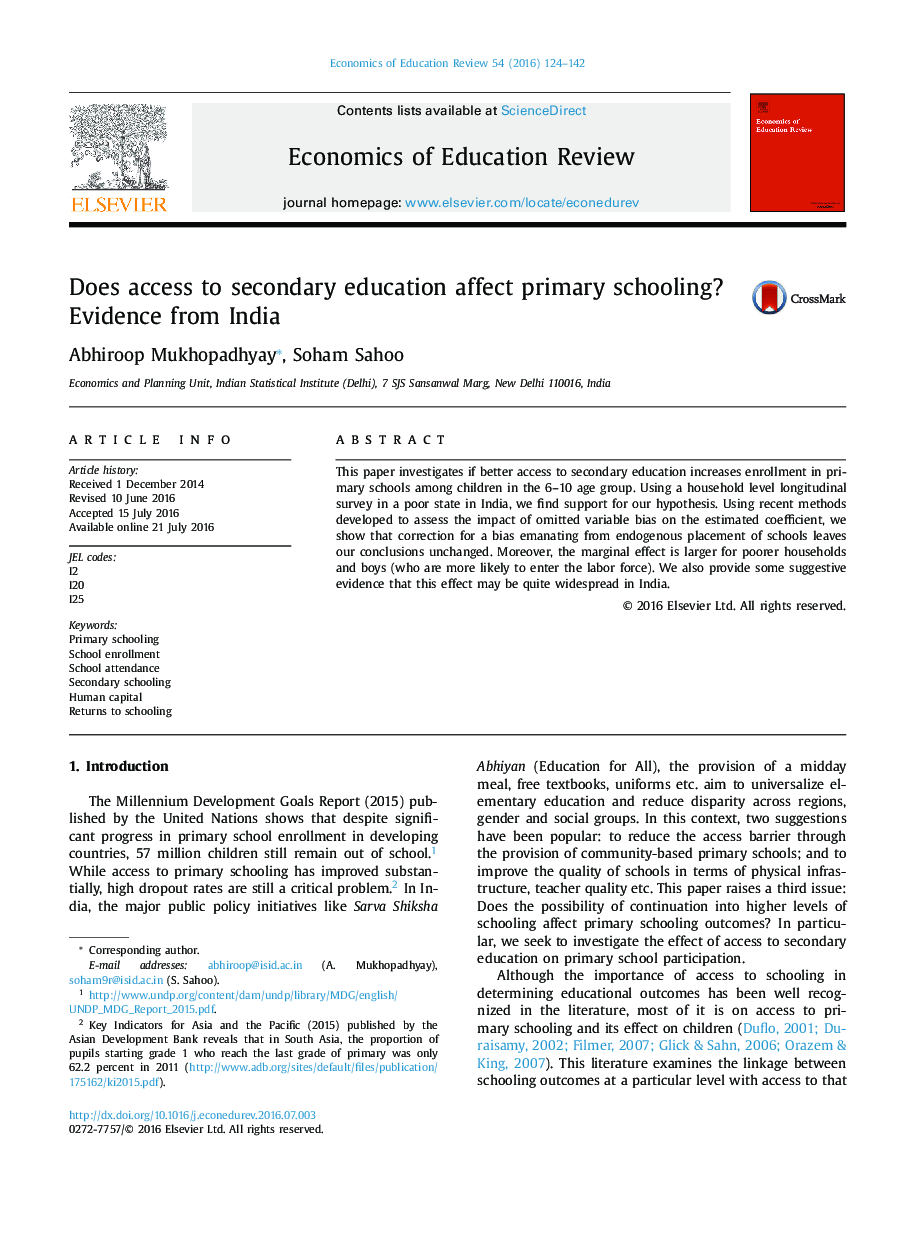| Article ID | Journal | Published Year | Pages | File Type |
|---|---|---|---|---|
| 354240 | Economics of Education Review | 2016 | 19 Pages |
•Access to secondary education has a backward linkage toprimary schooling decisions.•Evidence based on panel data collected in an under-developed state of India.•1 km reduction in distance to secondary school increases probability of primary enrollment by 0.074.•Effect only for boys and larger for poorer households.
This paper investigates if better access to secondary education increases enrollment in primary schools among children in the 6–10 age group. Using a household level longitudinal survey in a poor state in India, we find support for our hypothesis. Using recent methods developed to assess the impact of omitted variable bias on the estimated coefficient, we show that correction for a bias emanating from endogenous placement of schools leaves our conclusions unchanged. Moreover, the marginal effect is larger for poorer households and boys (who are more likely to enter the labor force). We also provide some suggestive evidence that this effect may be quite widespread in India.
